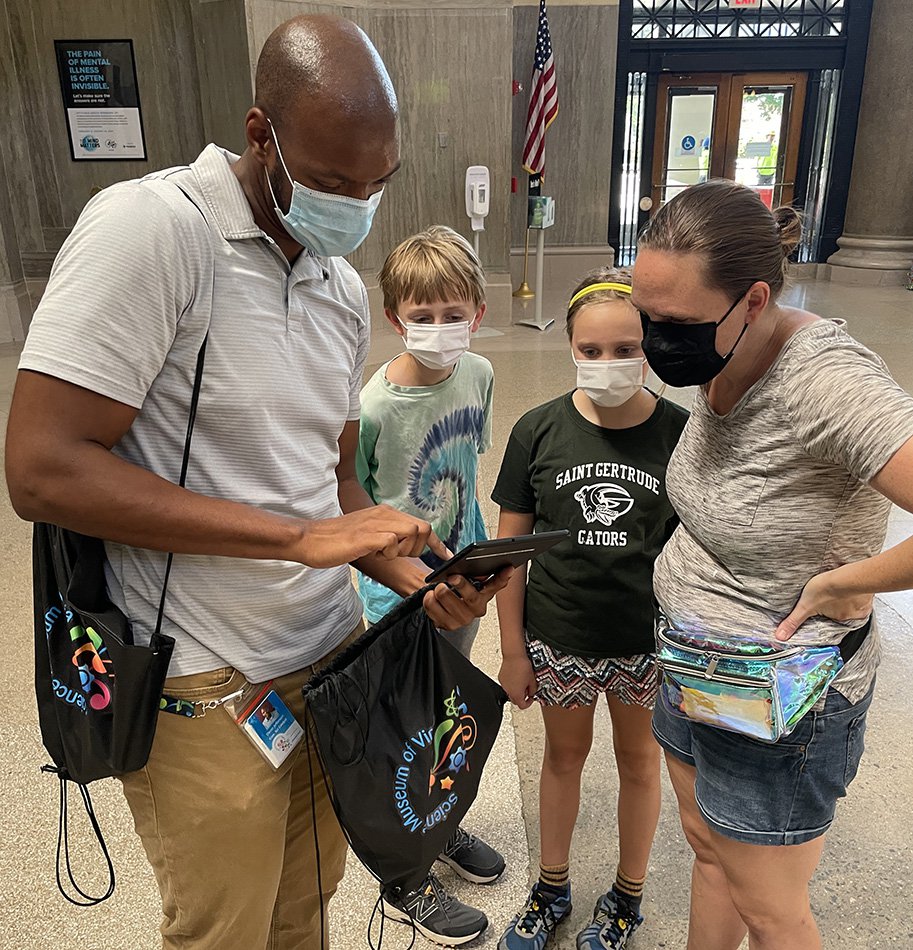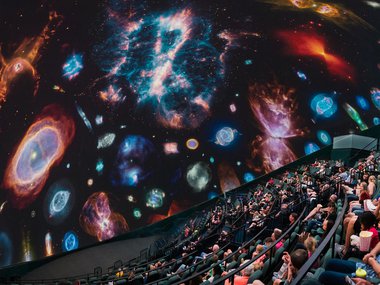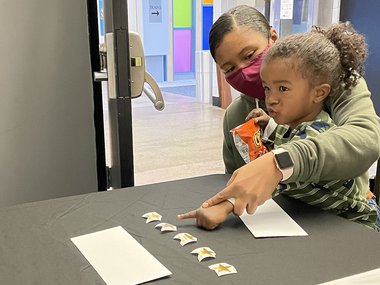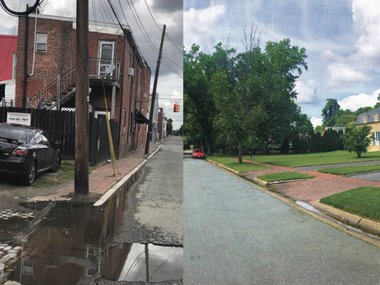Science Needs You!
Spring has finally arrived here in Richmond, Virginia. With the warmer weather comes more time outside. Not only is April a beautiful month with its mild temperatures and blooming flowers, it’s also Citizen Science Month! And, yes, there is an exclamation point after that because getting the community involved with science gets us very excited.
You don’t need to be an expert to help scientists collect data for citizen science research. There’s many different kinds of community-based projects that anyone can be involved in, no degree required. And the work you do will be used by scientists to further our understanding of our world and beyond.

The Eubank family participated in the RVAir community science project in August 2021. Museum staffer Devin Jefferson shows the group how the air quality sensors work.
Started in July 2007, Galaxy Zoo is the self-proclaimed “world’s best-known online citizen science project.” Initially, individuals saw images of galaxies from the Sloan Digital Sky Survey and were asked to sort the cosmic clusters into categories. During the first year, more than 150,000 people helped make more than 50 million classifications. Since then, Galaxy Zoo has launched multiple updated projects with new images of galaxies from different telescopes around the world.
With over 450 publications mentioning Galaxy Zoo in the abstract, Galaxy Zoo has the largest number of publications based on citizen science input. That means the data collected by the general public went on to help hundreds of teams of scientists and researchers with their specific projects.
Experts can’t be everywhere collecting data all the time. That’s where citizen science comes in, as individuals volunteer to aid in scientific research. The best part: anyone can participate from anywhere! Community science, like these next examples, are community-driven efforts aided by scientific experts to meet the goals of the community.
A recent and notable project comes from Louisiana, where the Claiborne Corridor of I-10 cuts through a once prominent business corridor and gathering place for the area’s historic Black and Creole community. The construction of the expressway during the 1960s and early 70s destroyed 200 oak trees, hundreds of local businesses and 500 homes in the area.
Community members teamed up with the Louisiana State University School of Public Health, Phillis Wheatley’s fourth grade class, Thriving Earth Exchange (a project matching communities with volunteer scientists) and Public Lab (a nonprofit that uses community science to address environmental issues that affect people). Together these groups documentmented the harm the I-10 highway extension in New Orleans continues to inflict on residents. Community science allowed them to collect specific data points that show this expressway is harmful and needs to come down. Those efforts eventually caught the attention of President Joe Biden, who called the Claiborne Expressway an example of historic inequity and backed removing it. Without the collective efforts of the community members involved in gathering data on which to base decisions, the project would likely not have been that successful or well known.
Community science can also be used to help us understand how rare and understudied species are responding to climate change. Much of what we know about climate impacts on forests comes from research on common species, which means there’s a gap in our understanding of its impact on rare species. This is where community science can help by combining peer-reviewed researcher observations with observations made by volunteer community members!
Using databases like Nature’s Notebook–an off-the-shelf program designed for scientists and non-scientists alike to collect phenology observations on both plants and animals–data contributed by individuals and groups have allowed researchers to create predictive models for oaks that were not well studied. This provided new information about when to expect oak budburst and leaf out, both in the short term and under future climate conditions.
Doesn’t helping further scientific research sound fun? Ready to join a community science initiative? Great, because we have the perfect opportunity!
The City Nature Challenge not only encourages you to get outside observing nature, but also aids in the scientific understanding of nature that exists in urbanized areas! Since the City Nature Challenge started in 2016, well over 1,300 rare, endangered and/or threatened species have been documented thanks to participation from community members.
This year’s challenge–a friendly competition between cities all over the world–runs April 29 through May 2. During this time, participants use the iNaturalist or Seek app to record photo and audio observations. The more people you recruit and the more organisms you observe–be it plant, animal or fungi–the more likely the Richmond area is to “win” the challenge!
Observations collected during these bio-blitzes provide a wealth of information for scientists to use to monitor any changes in biodiversity. Are there monarch butterflies visible in Richmond on April 14? Is that earlier than community members have spotted them in recent years? Is that species also visible in Washington, D.C. and Virginia Beach on the same day? By having people all over making observations and tracking them in the app, researchers can analyze the data and look for patterns or changes. This also helps scientists see if there’s an area that needs additional study. The community-provided information helps inform the scientists next action.
What’s your next action? Download the free iNaturalist or Seek app now. Create a free iNaturalist account and play around with it so you become familiar with how it works. Take pictures in your backyard. Go on a walk at lunch and snap images of plants you observe along the way. Then you’ll be a seasoned pro when the City Nature Challenge starts on April 29!


